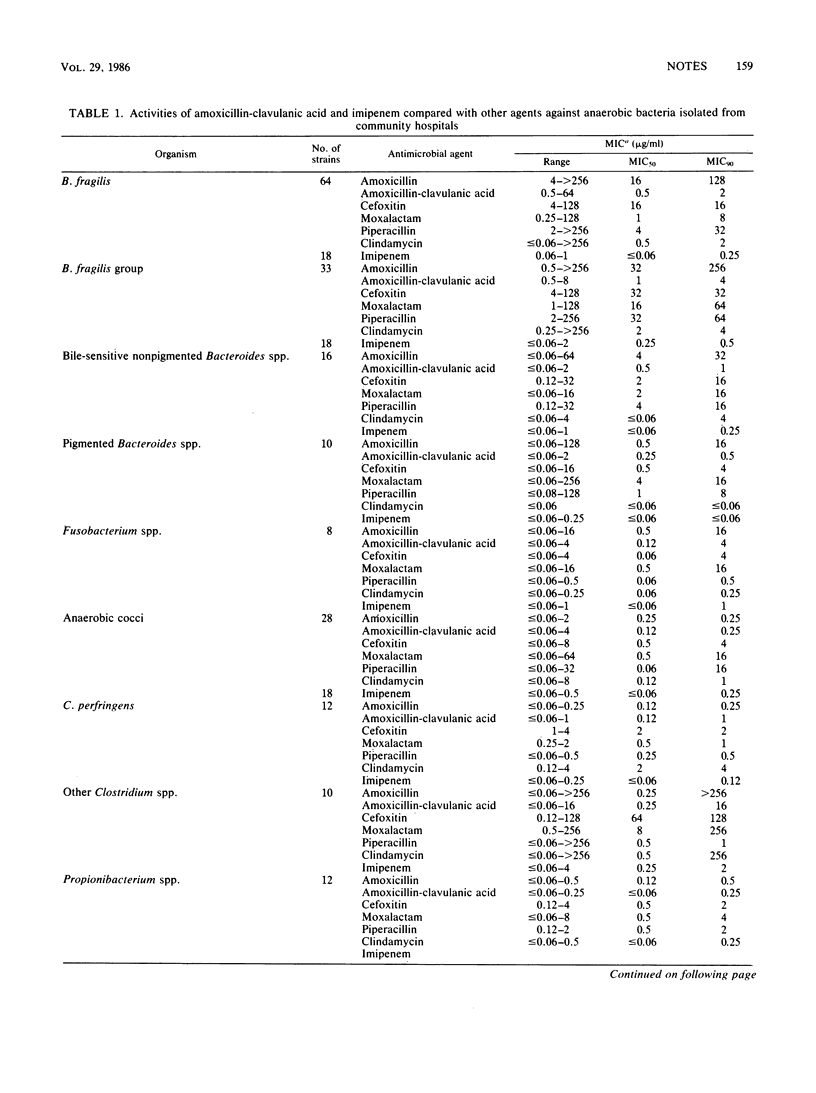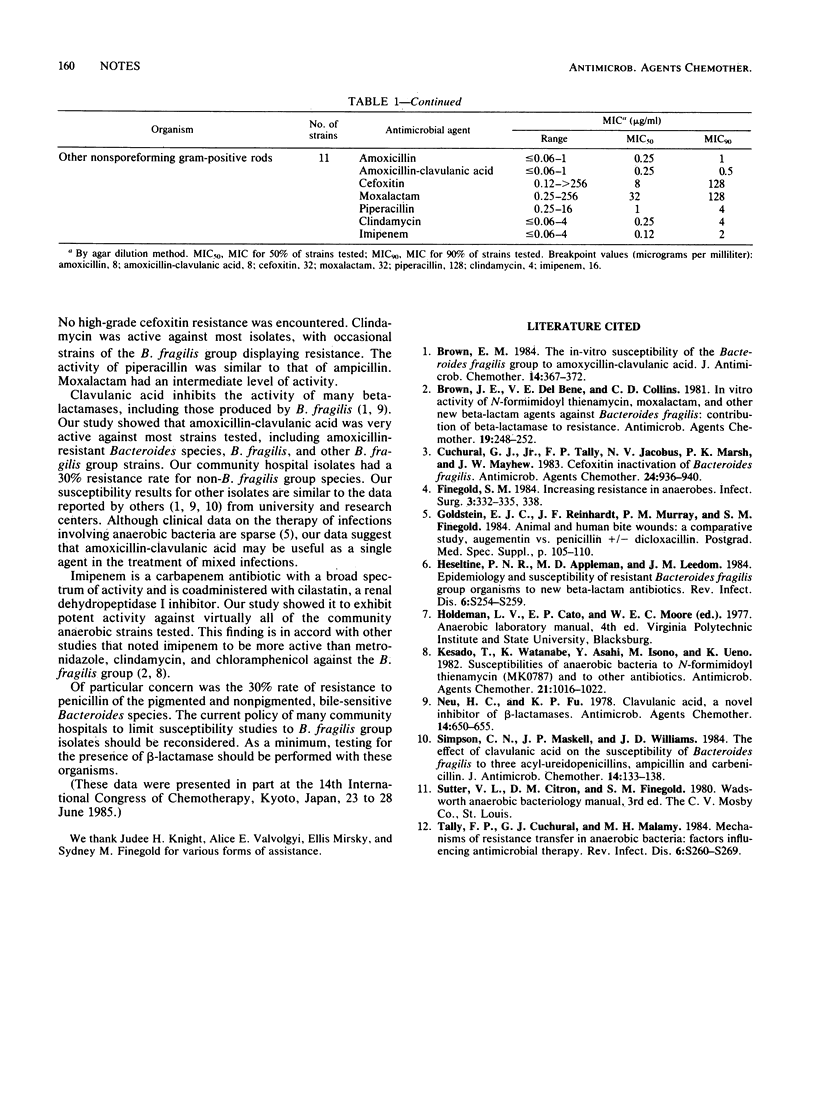Abstract
The susceptibilities of recent clinical isolates of anaerobic bacteria from two community hospitals were determined. Thirty percent of pigmented Bacteroides species and bile-sensitive, nonpigmented Bacteroides species produced penicillinase and were resistant to amoxicillin. Cefoxitin and clindamycin showed good activity against most strains, with the exception of rare isolates of the Bacteroides fragilis group and some strains of Clostridium species. While amoxicillin was not active against B. fragilis and other members of the B. fragilis group, amoxicillin-clavulanic acid was very active against almost all of these organisms. Imipenem was the most potent agent against all strains tested.
Full text
PDF


Selected References
These references are in PubMed. This may not be the complete list of references from this article.
- Brown E. M. The in-vitro susceptibility of the Bacteroides fragilis group to amoxycillin-clavulanic acid. J Antimicrob Chemother. 1984 Oct;14(4):367–372. doi: 10.1093/jac/14.4.367. [DOI] [PubMed] [Google Scholar]
- Brown J. E., Del Bene V. E., Collins C. D. In vitro activity of N-formimidoyl thienamycin, moxalactam, and other new beta-lactam agents against Bacteroides fragilis: contribution of beta-lactamase to resistance. Antimicrob Agents Chemother. 1981 Feb;19(2):248–252. doi: 10.1128/aac.19.2.248. [DOI] [PMC free article] [PubMed] [Google Scholar]
- Cuchural G. J., Jr, Tally F. P., Jacobus N. V., Marsh P. K., Mayhew J. W. Cefoxitin inactivation by Bacteroides fragilis. Antimicrob Agents Chemother. 1983 Dec;24(6):936–940. doi: 10.1128/aac.24.6.936. [DOI] [PMC free article] [PubMed] [Google Scholar]
- Heseltine P. N., Appleman M. D., Leedom J. M. Epidemiology and susceptibility of resistant Bacteroides fragilis group organisms to new beta-lactam antibiotics. Rev Infect Dis. 1984 Mar-Apr;6 (Suppl 1):S254–S259. doi: 10.1093/clinids/6.supplement_1.s254. [DOI] [PubMed] [Google Scholar]
- Kesado T., Watanabe K., Asahi Y., Isono M., Ueno K. Susceptibilities of anaerobic bacteria to N-formimidoyl thienamycin (MK0787) and to other antibiotics. Antimicrob Agents Chemother. 1982 Jun;21(6):1016–1022. doi: 10.1128/aac.21.6.1016. [DOI] [PMC free article] [PubMed] [Google Scholar]
- Neu H. C., Fu K. P. Clavulanic acid, a novel inhibitor of beta-lactamases. Antimicrob Agents Chemother. 1978 Nov;14(5):650–655. doi: 10.1128/aac.14.5.650. [DOI] [PMC free article] [PubMed] [Google Scholar]
- Simpson C. N., Maskell J. P., Williams J. D. The effect of clavulanic acid on the susceptibility of Bacteroides fragilis to three acyl-ureidopenicillins, ampicillin and carbenicillin. J Antimicrob Chemother. 1984 Aug;14(2):133–138. doi: 10.1093/jac/14.2.133. [DOI] [PubMed] [Google Scholar]
- Tally F. P., Cuchural G. J., Jr, Malamy M. H. Mechanisms of resistance and resistance transfer in anaerobic bacteria: factors influencing antimicrobial therapy. Rev Infect Dis. 1984 Mar-Apr;6 (Suppl 1):S260–S269. doi: 10.1093/clinids/6.supplement_1.s260. [DOI] [PubMed] [Google Scholar]


